
Northern Laos is a destination that captivates tourists, not only because of its historical and cultural beauty but also because of its famous delicacies that bear the spirit of the Lao people. Today, Asia King Travel will bring you on a journey to explore Northern Laos cuisine through its two major cities, Vientiane and Luang Prabang.
Northern Laos offers a variety of dining options, from budget eateries to high-end restaurants, but the most popular are still sidewalk shops and food areas near markets, always crowded with locals and tourists alike. These lively places are always vibrant and bustling with people coming in and out.
Although not too elaborate in the way of preparation or not too meticulous in marinating spices like Vietnamese, Chinese, or Korean cuisine, the delicious dishes in Vientiane and Luang Prabang still attract tourists thanks to their rusticity and uniqueness with classic and distinct flavors.
Begin your Northern Laos Food Tour 5 days with a traditional Lao breakfast. Start with one of the most famous Lao dishes, Khao Niew sticky rice.
This sticky rice dish which was cultivated in local fields gives off a beautiful ivory-white color and a fragrant aroma. It is traditionally served in bamboo and rattan baskets, often accompanied by "cheo boong" dipping sauce. This sauce, made from a variety of ingredients such as hot chili, garlic, fish sauce, sugar, and diced pork skin, offers a distinctive spicy flavor that you will surely be fond of. This dish can be enjoyed anywhere, from restaurants to street food vendors, and is available at very reasonable prices.
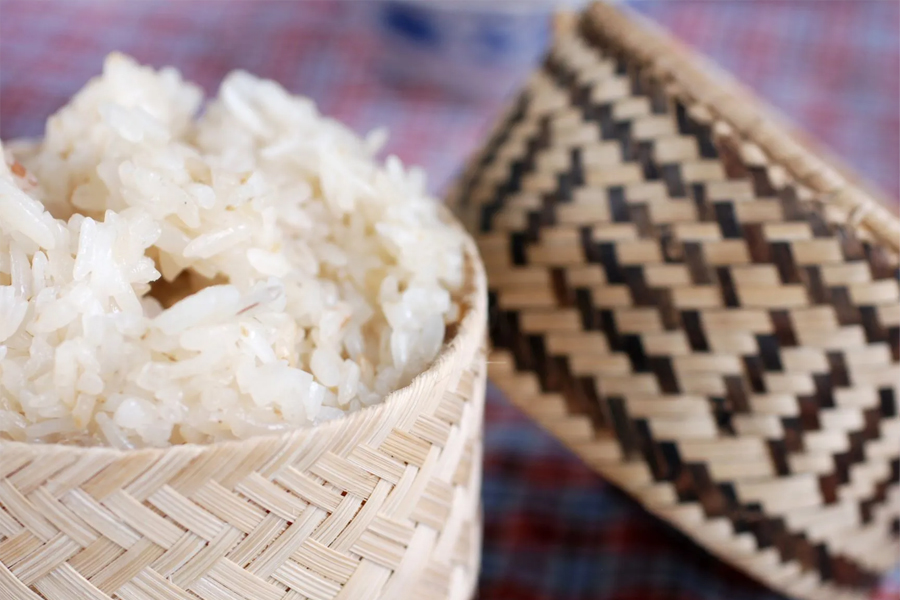
Khao Niew (Cre: Love Laos)
For lunch, you should try another signature dish of Laos, Tam Mak Houng papaya salad. Popular in neighboring countries like Thailand and Vietnam, however, this variant of the lovely dish is also a must-try when visiting Vientiane. This dish is highly appreciated by many tourists due to its unique preparation and the distinctive flavors characteristic of Lao cuisine.
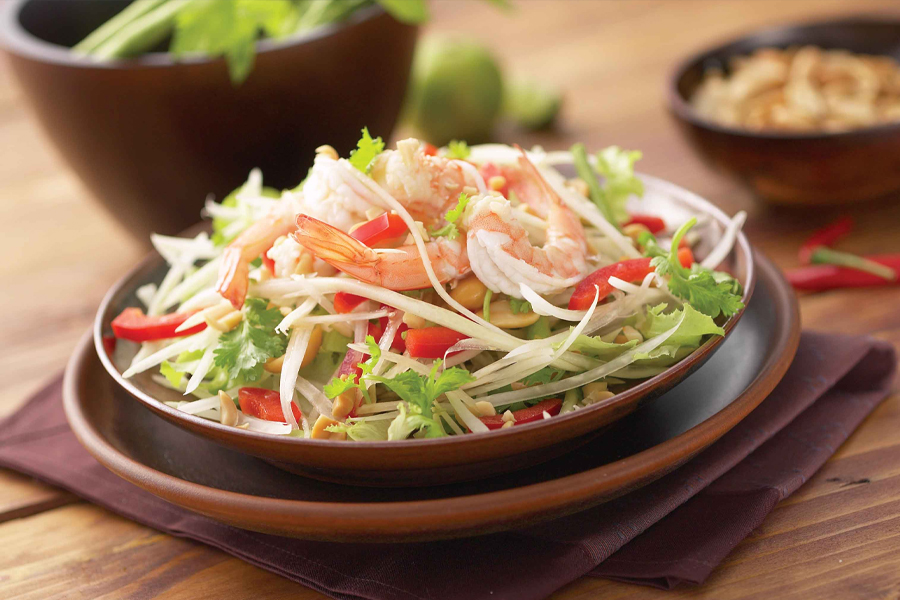
Tam Mak Houng papaya salad (Cre: Indochina Tour Packages)
To make Tam Mak Houng papaya salad, the Lao people select papayas that are neither green nor ripe. The papayas are then grated into small pieces or thinly sliced and mixed with spices such as lemon, chili, salt, sugar, fish sauce, and eggplant. These simple ingredients combine to create an enticing aroma that captivates visitors. Tam Mak Houng papaya salad also features a delicious broth, making it perfect to eat with baguettes, or to dip sticky rice into.
For dinner, enjoy Laap (Larb), a dish made from simple ingredients, including finely chopped pork, beef, or chicken. The meat is then mixed and marinated with spices such as galangal, chili, and lemon juice in appropriate proportions.
Once prepared, the mixture is stir-fried until cooked, releasing a sweet, fragrant aroma. Laap is typically served alongside raw vegetables like cowpeas, lettuce, and other crunchy greens, adding to its appeal. This is simply a must-try dish for tourists visiting Vientiane.
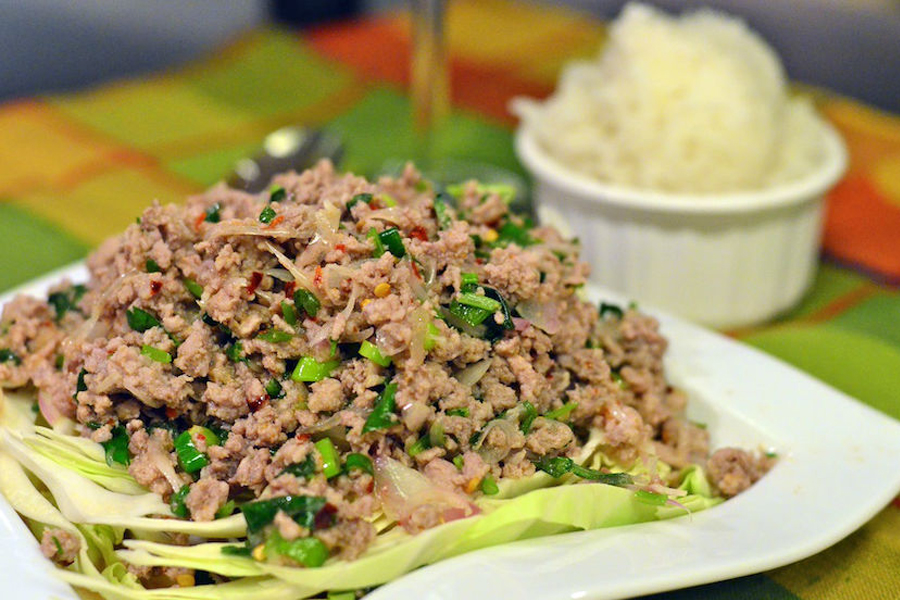
Laap (Cre: Indochina Voyages)
It's your second and last day in Vientiane, so now it’s time to dive into some delicious street food. Begin your Northern Laos Food Tour 5 days with a Khao Jee Sandwich, a Lao-style baguette filled with pate, grilled meat, and pickled vegetables, reflecting the French influence on Lao cuisine. This dish is very similar to Vietnam’s Banh Mi, however, it has some differences, as it often features traditional Laos ingredients such as Laos sausage and Jeow bong, Lao chili sauce.
For lunch, explore the street food markets and try Khao Soy. Also served in Northern Thailand and Myanmar, Khao Soy is a delicious noodle dish that is very popular in Vientiane. While it shares some major similarities with Vietnamese Pho, such as the noodles, there are notable differences between the two dishes.
However, unlike Vietnamese Pho, which relies on a rich bone broth, Khao Soy is prepared with boiled filtered water and served with water spinach, mustard greens, chili sauce, and pepper. Additionally, including a pureed pork mixture, combined with tomatoes, garlic, and various spices in the broth, enhances the dish's flavor.
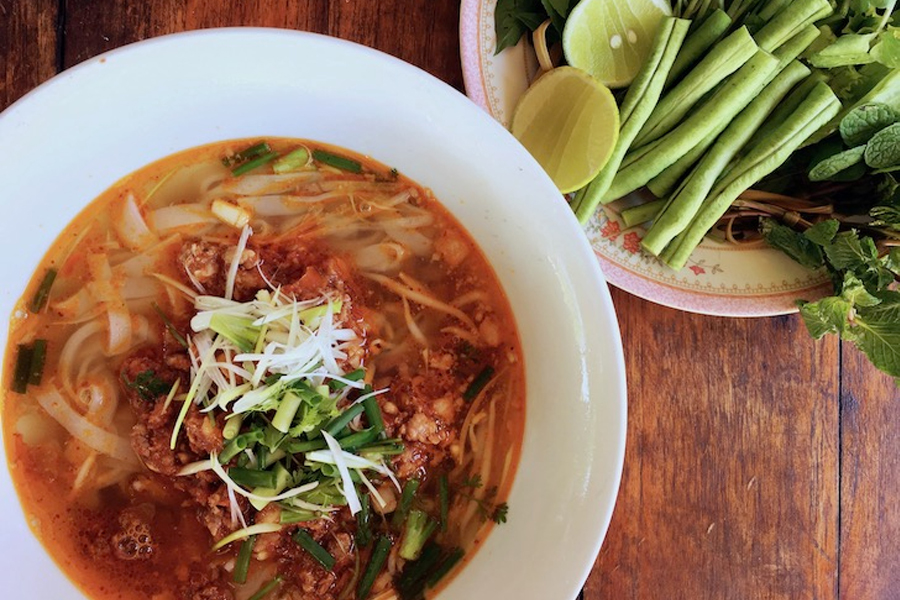
Khao Soy (Cre: So Many Miles)
In the evening, visit one of Vientiane’s bustling night markets to enjoy Savannakhet Grilled Chicken. Although it originated in the Savannakhet region of Laos, it is very popular in Vientiane and can be found in many street vendors and night markets.
The chickens are skewered with bamboo sticks and grilled until the meat is charred, the skin turns shiny and golden, and it emits an irresistible aroma. Savannakhet Grilled Chicken is typically served with sticky rice along with cheo boong dipping sauce, creating a harmonious blend of flavors and textures that enchant visitors, while also providing an authentic taste of Lao culinary heritage.
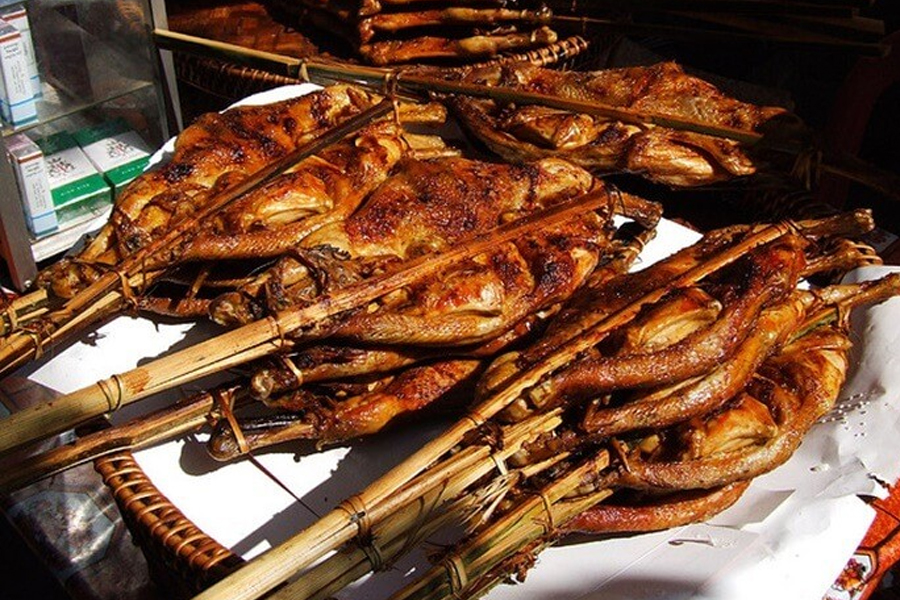
Savannakhet grilled chicken (Cre: Luhanhvietnam)
You may like: 5-Day Food tour in Phnom Penh – A Culinary Adventure
Leaving the capital Vientiane, we’re heading to the ancient city of Luang Prabang, which also boasts an amazing culinary scene. Begin your day with Khao Piak Khao, a Lao rice porridge made with rice simmered until soft and creamy, often garnished with fresh herbs, spring onions, and a drizzle of soy sauce. It’s a nutritious way to start your day.
For lunch, savor Or Lam, a mildly spicy stew that is traditional to Luang Prabang. The stew is made from lemongrass, chilies, and Lao chili wood (sakhaan), slowly simmered in beef broth. Then they add garnishes like grilled citronella, minced garlic, diced onion, and chopped dill to enhance the flavors.
The broth is finished by adding meat such as chicken or beef, along with eggplants, mushrooms and beans. It’s a perfect comfort food for a cold day.
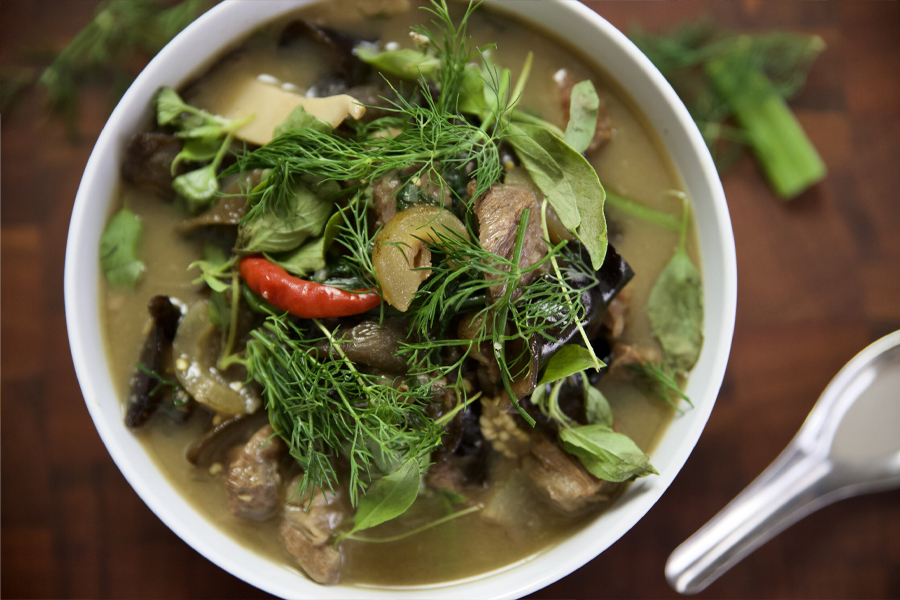
Or Lam (Cre: Saeng's Kitchen)
For dinner, enjoy Mok Pa, a traditional Lao dish of fish steamed in banana leaves with herbs, served with sticky rice. The delicate flavors of the fish and herbs create a memorable culinary experience.
Again, let’s try out some other street food that is commonly found in Luang Prabang. Start your Northern Laos Food Tour 5 days with Khao Piak Sen, a comforting noodle soup made with rice noodles, fresh herbs, chicken or pork, and a rich broth. It is similar to another Lao noodle dish, Khau Soy, and it can be compared to Vietnam’s Banh Canh, with the noodles having a similar texture to udon noodles, thick and chewy.
For lunch, savor Khua Mee, a stir-fried noodle dish made with rice noodles, vegetables, and your choice of meat, seasoned with garlic, soy sauce, and sometimes chili. This dish is a staple in Luang Prabang and is loved for its simplicity and flavor.
In the evening, it’s not a Laos food tour without visiting Luang Prabang’s bustling night market. The first dish that you must enjoy is Ping Pa, grilled fish that is marinated and grilled to perfection, served with sticky rice and dipping sauces.
For the adventurous, try some unique offerings like grilled insects, a local delicacy that provides a crunchy and surprisingly flavorful experience. We must first warn you that this is not for the faint of heart. Like in Cambodia and Thailand, the Lao people are fond of insect dishes such as grasshoppers, crickets, ant eggs, and spiders. These unique dishes will appeal to people with a taste for something out of the ordinary but may be daunting for those not fond of insects.

Insect dishes (Cre: Champa Meuanglao)
Start your day with a market tour in Luang Prabang to immerse yourself in the local culture and cuisine. Visit the Morning Market to see a wide variety of fresh produce, herbs, spices, and unique Lao ingredients.
After the market tour, you will head to a local cooking school for a cooking class and learn to prepare several classic Lao dishes under the guidance of experienced chefs. A popular school to try is Bamboo Tree, where you can take home a cookbook with recipes to replicate the meal in your own kitchen. You’ll start by making fresh spring rolls or a traditional Lao salad, followed by a main course like Mok Pa, Laap, and a delightful dessert such as Khao Nom Kok.
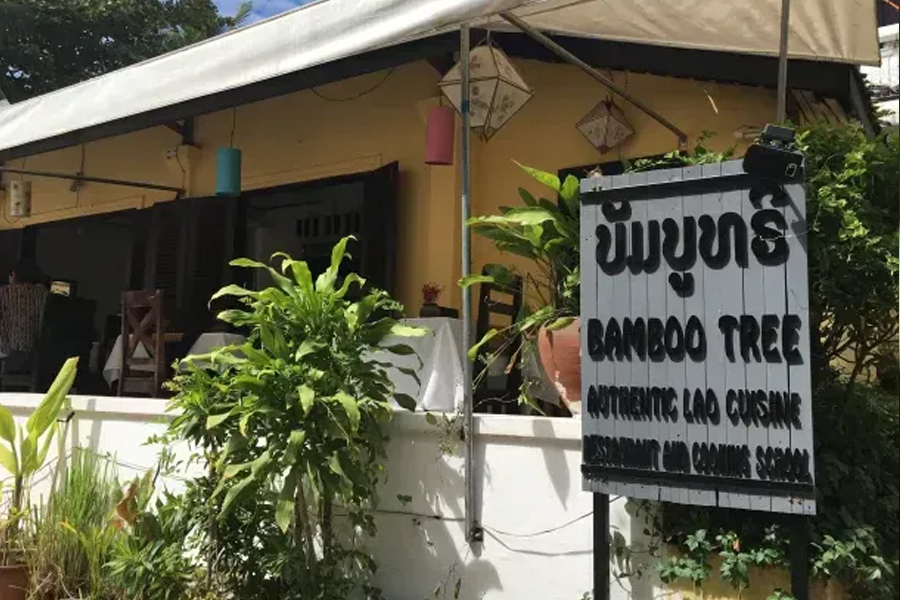
Bamboo Tree Cooking Class (Cre: The Culture Trip)
Once the cooking class is over, sit down to enjoy the meal you’ve prepared. This is a great opportunity to savor the flavors of your homemade Lao dishes and to share the experience with fellow participants.
For your final dinner in Luang Prabang, consider dining at a restaurant that offers a comprehensive menu of both traditional and modern Lao dishes, to reflect on your culinary journey and enjoy one last taste of Laos’ rich food culture.
In conclusion, the northern region of Laos is a food haven for tourists, offering a variety of delicacies that cater to all palates and dietary preferences.
You may like: Authentic Lao Cuisine: Cooking Classes for Tourists